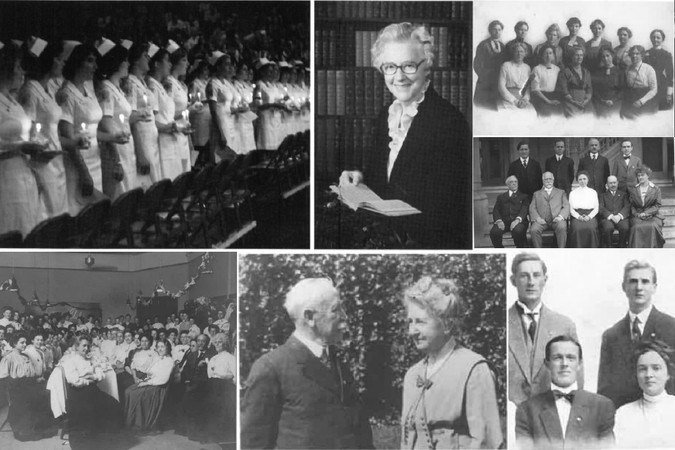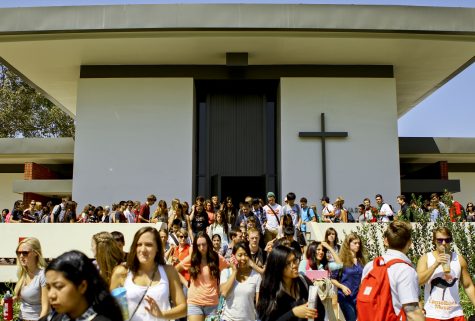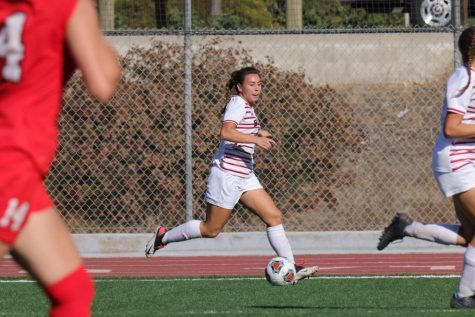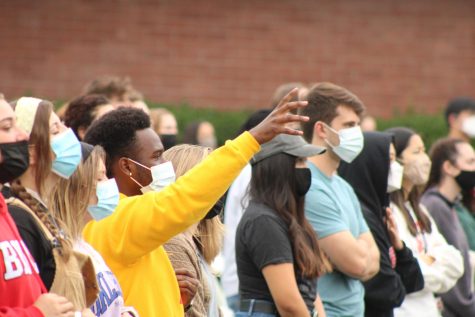Women hold a rich role in Biola history
iola celebrates Women’s History Month by remembering the influential women that helped found and shape the university.
March 28, 2018
Behind every great man is a great woman. Most of the powerful men who shaped Biola also had powerful wives who were exemplifying what it means to be a woman of God.
From Anna Horton to today—Biola celebrates Women’s History Month by remembering the 111 years of powerful women in Biola’s history that helped found the institution and shape it into what it is today*.
Since Biola’s founding in 1907, there have been influential women who raised support for the institution and theologically shaped its beliefs.
BIOLA’S FOUNDATION
It all started with Anna Horton, the wife of founder T.C. Horton, who was known as “Mother Horton.” As Biola’s first dean of women, Anna Horton founded the Lyceum Club for young women, a Bible study located at Immanuel Presbyterian Church in downtown Los Angeles. From this club, Anna Horton would select a few women, known as the “Bible Women”, to go around the neighborhood ministering to people and teaching Bible classes. Anna Horton is remembered at Biola for being ahead of her time and for valuing women’s education, faith and discipleship.
ANOTHER FOUNDERS WIFE
Lyman Stewart’s wife Jane Miller Irwin similarly took interest in the community and showed boldness through her actions. Irwin went door to door around LA to share the love of Jesus as well as raise support for Biola’s future campus. Irwin fully devoted herself in the vision of Biola and was influential in finding others to support the university and become invested in their ministries.
WOMEN OF THE UNIVERSITY
There is no denying the high presence of women during the foundational years of Biola. The first graduating class of Biola in 1911 contained two women, Helen Day and Helen Smith. The 1917 faculty of Biola also contained two women: Baldwin who was involved in Torrey Honors Institute and Frances Allison who was the superintendent of women.
WOMEN AS MISSIONARIES
Women at Biola were mostly involved in running Bible studies and leading missionary organizations. Jessie Tritt began to teach a ladies Sunday school class in 1917, later named the Auditorium Bible Class, and taught until 1962.
Tritt’s sister, Anna Dennis, started to teach Mother’s Class, originally organized by Berta Dryer and taught the class until 1960. McNeill, the wife of Biola’s second pastor D.L. Moody McNeill, organized the Women’s Missionary Organization in 1927 and supported women who wanted to go on missions trips. Later, Louie Talbot’s wife founded a second missionary organization in 1938 where she provided new wardrobes to returning missionaries and their children. The organization was originally called Young Women’s Missionary Auxiliary but was later named Dorcas Missionary Society.
THE INFLUENCE OF WOMEN
Carol Terry, Talbot’s second wife, was a Biola graduate who spent over 20 years doing missions in India and was known to have given Talbot a new vitality. Ralph Scoville and his wife also served as missionaries in China and later came back to serve on the pastoral staff, primarily for visitation, and were known for their hospitality and dedication to Biola.
Multiple buildings around Biola are named after influential women in Biola’s history and are testimonials of the powerful women of Biola. Ramage was a Biola radio listener from Riverside and donated the giant seven feet tall Jesus Saves sign in 1935. The Rose of Sharon Prayer Chapel was donated by former Biola student Robert Minshew and was dedicated to his wife who passed away in 1963. Margaret Hart, longtime dean of women from 1959 to 1977, was a great prayer warrior and Hart Hall is dedicated in her honor. Leonie Soubirou directed the School of Missionary Medicine and pioneered the program at the downtown campus. She was loved and admired by all who took her classes, and in 1980 Soubirou Hall was dedicated to her.
WOMEN IN PRESENT DAY BIOLA
Anna Belle Cook, previous President Clyde Cook’s wife, had a more recent impact on Biola’s campus. Anna Belle played a serious role in their various ministries together as they served in the Philippines for multiple years and ran the missions department at Biola. She is known for being a faithful steward and servant to Biola students.
Biola women are celebrated today through the Ruby Women Society with their aim being “to discover how we might equip, engage and inspire women so through them, the world would further experience God’s love.” According to the Ruby Women website, they hope to bring women together and inspire the next generation as they recognize what women are doing to further the kingdom of God. Ruby Women gives out awards every year to women who exemplify characteristics that align with women in Scripture.
*The history of Biola and influential women at Biola are recorded in “Biola University: Rooted for One Hundred Years, Established 1908,” and “70 years on Hope Street: A History of the Church of the Open Door, 1915-1985.”







